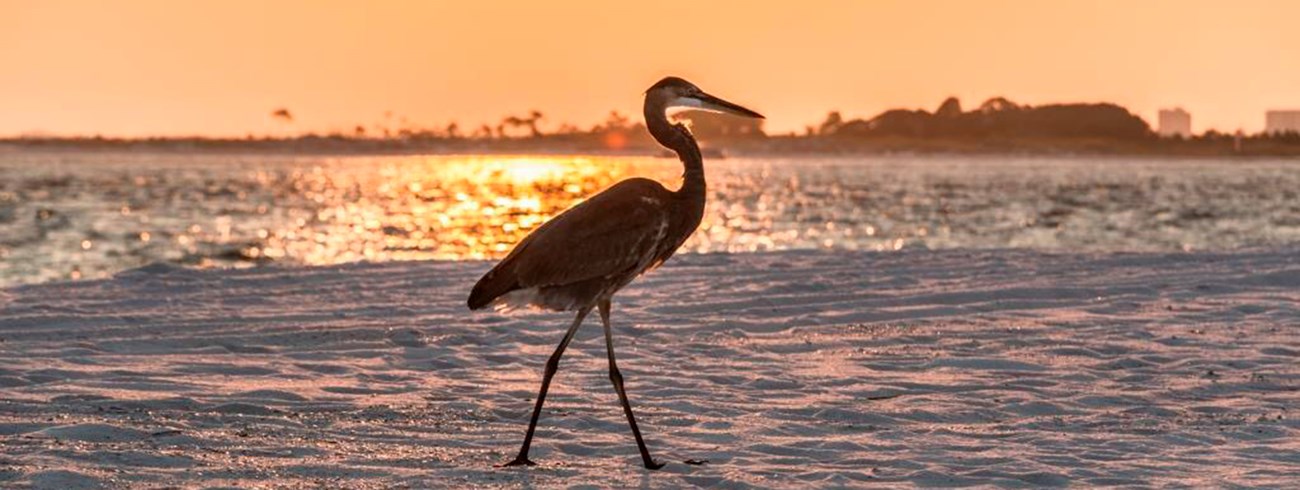
NPS Photo Great blue herons (Ardea Herodias) are the largest heron and a very adaptable bird. They are found all over the world including North and South America, and in parts of Asia, Africa, and Australia. In North America, they are found throughout the United States and will nest at Gulf Islands National Seashore. Great blue herons have a wingspan of 72 inches and a height of 46 inches. They have long necks and legs. Their bodies are a blue gray color while their necks vary from gray to blue to brown. The adults have white heads with black plumes, while the immature birds do not have plumes. Both their beaks and eyes are yellow.
When flying, great blue herons tuck in their neck and keep their legs together. They can fly up to 23 mph and have multiple calls including calls that signal taking off and landing. Their lifespan is around 15 years. These birds are seasonally monogamous with one partner and will find another partner for the next season. The male bird finds the supplies for the nest, while the female builds it. Depending on the predators in the area, nests could be built on the tops of trees or on the ground. They will only nest on the ground if there is no natural predator to their eggs. Raccoons will scavenge for eggs, owls for baby great blue heron, and on occasion, an alligator may attack an adult great blue heron. Great blue herons will also nest in colonies and can occupy the same area year after year. Once the nest is completed, the female can lay 2 – 7 eggs and both she and the male will take turns incubating them, males during the day and females at night. Great blue heron eggs take about 27 days to hatch and both the male and female feed the chicks by regurgitation. By week three, great blue herons can walk steadily, but it isn’t until week eight that they can fly. After two to three months, they are fully out of the nest and expected to fend for themselves. In two years’ time, they will start breeding. To attract a mate, they stretch their necks and draw attention to their plumes. Great blue herons can adapt to their climate easily change their diet and nesting patterns depending on where they live. Typically, they will stay near water as their main diet includes fish. But they will also eat invertebrates like crawfish, crabs, and dragonflies and in lesser capacity small reptiles and rodents. Great blue herons forage both day and night and are able to do so because they have well developed night vision. While stalking prey in water, great blue herons stay towards the edges of freshwater or saltwater shorelines. They move slowly and wait patiently for a fish to come to them so they can spear it with their beaks.
At Gulf Islands National Seashore, it is common to find great blue herons “stalking” around humans who are fishing in the park. Feeding herons caught fish or leaving bait out for them, accustoms them to humans and disrupts their normal hunting habits. In addition, these majestic birds can get tangled easily in fishing line or stuck by hooks. Help us protect these fantastic fishers by disposing of your fishing line and hooks.
|
Last updated: October 29, 2018
